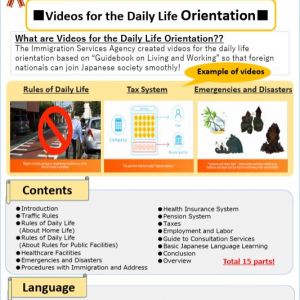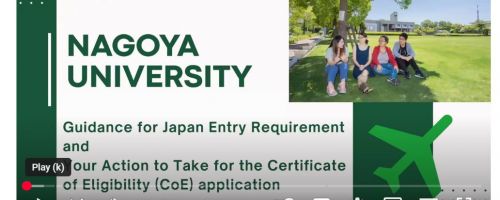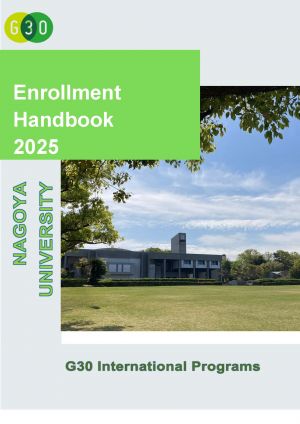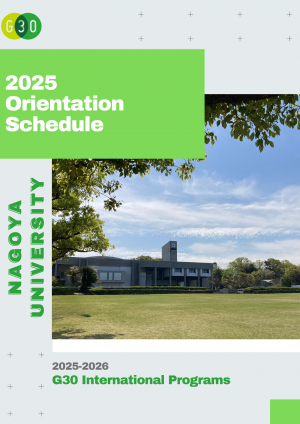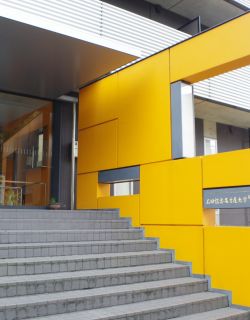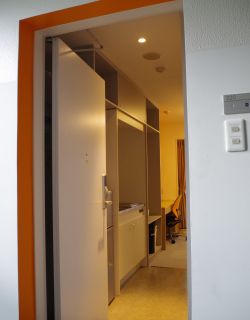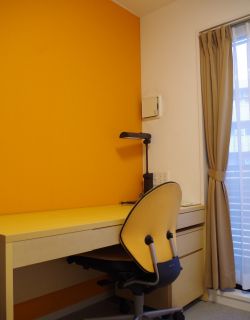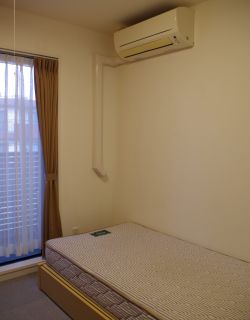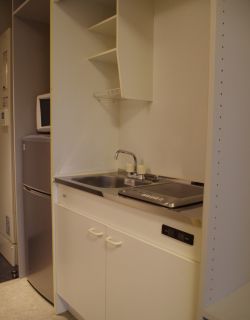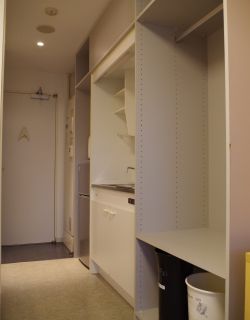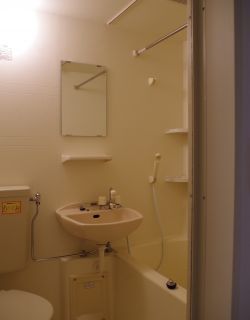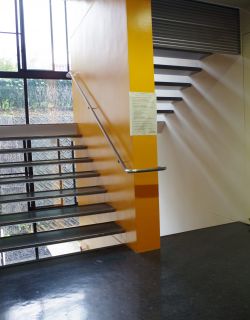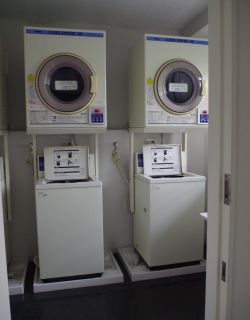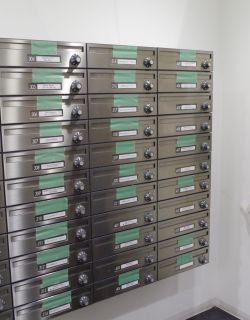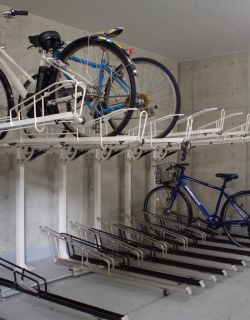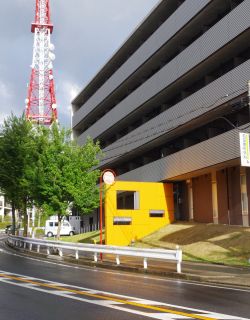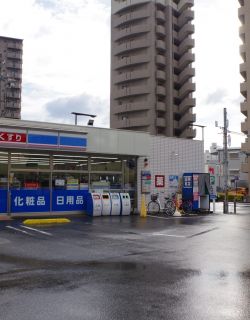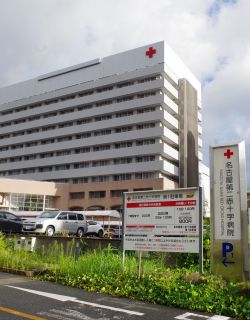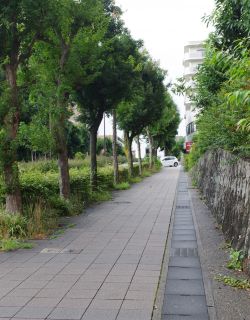After Admission
<<This information is for Undergraduate ONLY>>
This information is only for admitted incoming students of the G30 Undergraduate Program. Please note that there might be changes to the basic schedule from year to year and always follow the latest instructions sent to you by the International Admissions Office.
Schedule after Acceptance of Admission Offer
Last Updated: 2025/07/01
*Incoming students will be informed of the detailed instruction by Admissions Office on T-cens.
April | 1st Round of Successful Applicants
|
April 10 | CoE (Certificate of Eligibility) application webinar by Zoom (the link will be shared only to the admitted students on T-cens) |
May | 2nd Round of Successful Applicants
|
July 1 | Publication of the latest Enrollment Instructions Handbook |
July 4 |
Please use the form available HERE Make sure you are using your program specific form and do not use the form on T-cens which is in old format. If you have already submitted it, please resend a new version via T-cens message function.
Please use the form available HERE This is only for Japanese nationals, Japanese Residence card holder (Permanent), and non-Japanese nationals whose guardians live in Japan |
July 11th | Virtual Office Hour (Webinar) with the existing senior students via Zoom |
July 15th | Complete STEP 3 on T-cens
|
August 1 | Submit official copies of final qualifications (e.g. Your High School Diploma, IB Diploma, A-level results etc.) |
August 5 | Pre-Arrival Questionnaire (the link will be shared on Enrolment Handbook) submission deadline. Incoming students to give Admission Office the following information:
|
Mid-August | Start Visa Application
|
Late-August | Dormitory details to be confirmed. Receive Letter of Acceptance to Dormitory. |
September 16 | Arrive at Nagoya, Japan
|
September 17 | G30 welcome orientation in the afternoon *All incoming students are expected to arrive at Nagoya by the noon of 17th Sep by the latest in order to join the welcome orientation. |
September 18 | Ward Office Tour at Municipal Government Office
|
September 16-30 | Orientation Week
|
October 1 | Entrance Ceremony |
October | Class Registration for the Fall Semester Drop/Add Classes (until mid- to late October) |
Early to Mid-October | Apply for Tuition/Admission Fee Waiver |
Late November | Tuition Payment Due (for those not applying for the tuition waiver) |
Mid-December | Announcement of Tuition/Admission Fee Waiver Result |
Early March | Apply for Tuition Waiver for Next Fiscal Year (for the Spring and Fall semesters at once) |
April |
|
Late May | Tuition Payment Due (for those not applying for the tuition fee waiver) |
CoE (Certificate of Eligibility) Handbook
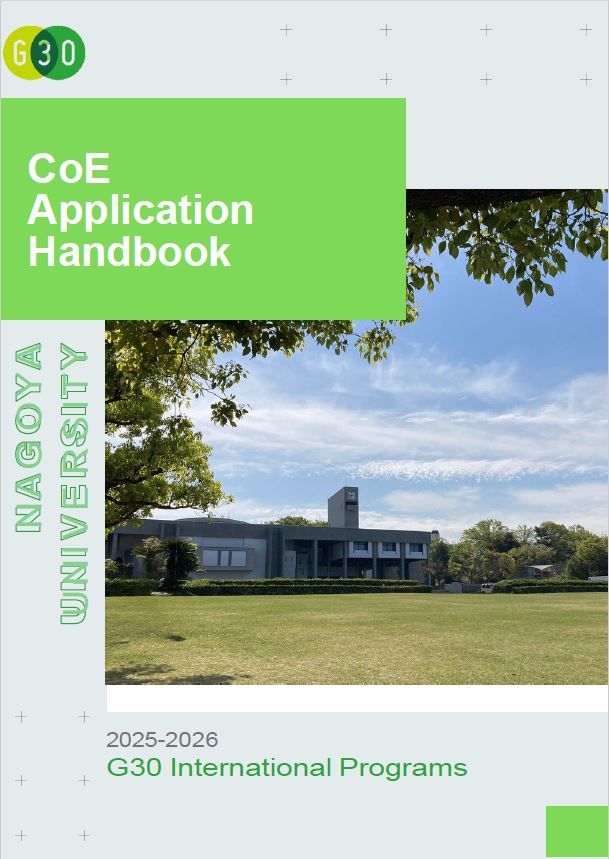
Last Updated : 2025/04/16
All non-Japanese national students without a valid Japanese visa need to obtain a Student visa
before coming to Japan, but in the first place you need Certificate of Eligibility (CoE) for the visa
application. Please refer to the Handbook and upload the required documents on T-cens by the stated deadline.
*If you are a MEXT scholarhsip student or a Japanese residence card-holder, this process will be exempt.
Download the required documents :
- CoE Application Handbook
- CoE Application Form
- [SAMPLE] CoE Application Form
- Financial Support Statement
What is happening during the Orientation Week?
Detailed information will be published as part of the Enrollment Instructions.
Nagoya University G30 Program provides two categories of courses – one is the Liberal Arts and Sciences comprised of classes taught across programs. The other category is the Specialized Subject, which is specifically offered by the program. Serving as a headquarters for planning, designing, and evaluating liberal arts and sciences education at Nagoya University, the Institute of Liberal Arts and Sciences (ILAS) will organize a new student orientation for G30 students.
During the ILAS Orientation, general information regarding Liberal Arts and Sciences courses and the registration process will be covered. Please do not forget to bring your smartphone (or tablet). You need to use two-factor authentication to log in to the Nagoya University’s portal.
**Mandatory for everyone regardless of your actual level of Japanese including Japanese native speakers
Before course registration, all G30 students will sit for a placement test to help G30 Japanese Language Coordinators to assess your current level of Japanese. The course you will be placed into will be carefully decided based on your answers to the Japanese Learning Questionnaire (Form 1) and the placement test which will be held during the Orientation Week. The placement test is only used for the purpose of evaluating your present level of Japanese, so do not feel pressured (you don’t need to study hard during holidays unless you really want to)!
G30 Japanese Language Coordinators will arrange an interview one-on-one after the placement test and give you feedback on a test result. During the meeting, they will also explain the curriculum, course description and credit requirements of the course you are placed into, so if you have any questions or concerns, list them up and talk to the coordinators.
LEVEL:
JLPT N5 – Beginner
JLPT N4-N3 – Beginner to Intermediate
JPLT N2-N1 – Advanced
Recognition of credits based on Japanese Language Proficiency Test
You can get the maximum of 6 credits from taking JLTP N1 and N2 instead of actually studying Japanese 1 (4credits) or Japanese Notation 1 (2 credits). Please note that if you already earn the credits from Compulsory Language and Culture, you may not be qualified to get any additional credits through this program. For details, please talk directly to G30 Japanese Language Education Coordinators during the orientation.
The Physics Assessment Test is an informal measure of your ability in Physics so that G30 Physics lecturers can tailor their teaching to the needs of students taking physics units, particularly in Year 1. The result does not affect your grades at all. Try to revise enough to show us what you can do in Physics – but there’s no need to take it super seriously (unless you want to)!
The Physics Assessment Test will be held mainly for students enrolled in Automotive Engineering (School of Engineering), Physics-Science (School of Science), Chemistry (School of Science and School of Engineering), and Biological Sciences (School of Science and School of Agricultural Sciences).
NOTE: Students enrolled in Social Sciences (School of Law and School of Economics) and Japan-in-Asia Cultural Studies (School of Humanities) do not need to take the assessment tests, unless they plan to take any Year 1 Fundamentals of Physics courses.
What to bring?
- Letter of Acceptance from Nagoya University
- Insurance payment receipt for Personal Accident & Liability Insurance for Students Pursing Education and Research (PAS & LSR)
- Copy of your passport
- Copies of front and back sides of your residence card
- Form 3 “Letter of Guarantee”
…Only for
(1) Japanese passport holders or those with a Japanese permanent resident visa; or
(2) Foreign nationals whose co-signer such as either of the parents currently lives in Japan - Form 4 “Consent Form for the Notification of Credits Obtained”
…Only for students whose co-signer such as either of the parents currently lives in Japan
(The most fun part…!) Ask senior (or senpai) students whatever questions you have. Senpai students might be preparing games and fun activities to entertain newly enrolled students. Come and join the fun!
Although we do not hold assessment test of mathematics, we recommend you review your high school textbooks of mathematics. On the following page you can find information on the mathematics classes offered in coming Fall together with some resources (click here).
Dormitory
Nagoya University Ishida Memorial International Residence Myoken is a dorm built by Nagoya University in 2011 specifically for the Global 30 (G30) program. Located 10 minutes away from the university by foot.
Each room is 3×5 m squared equipped with a bathroom, kitchen, fridge, microwave, IH stove, desk, and bed. Women’s rooms and men’s rooms are on a different floor. The room also comes with a veranda and a washing pole for laundry. There are three washing machines and driers on each floor, and a study room on the first floor.
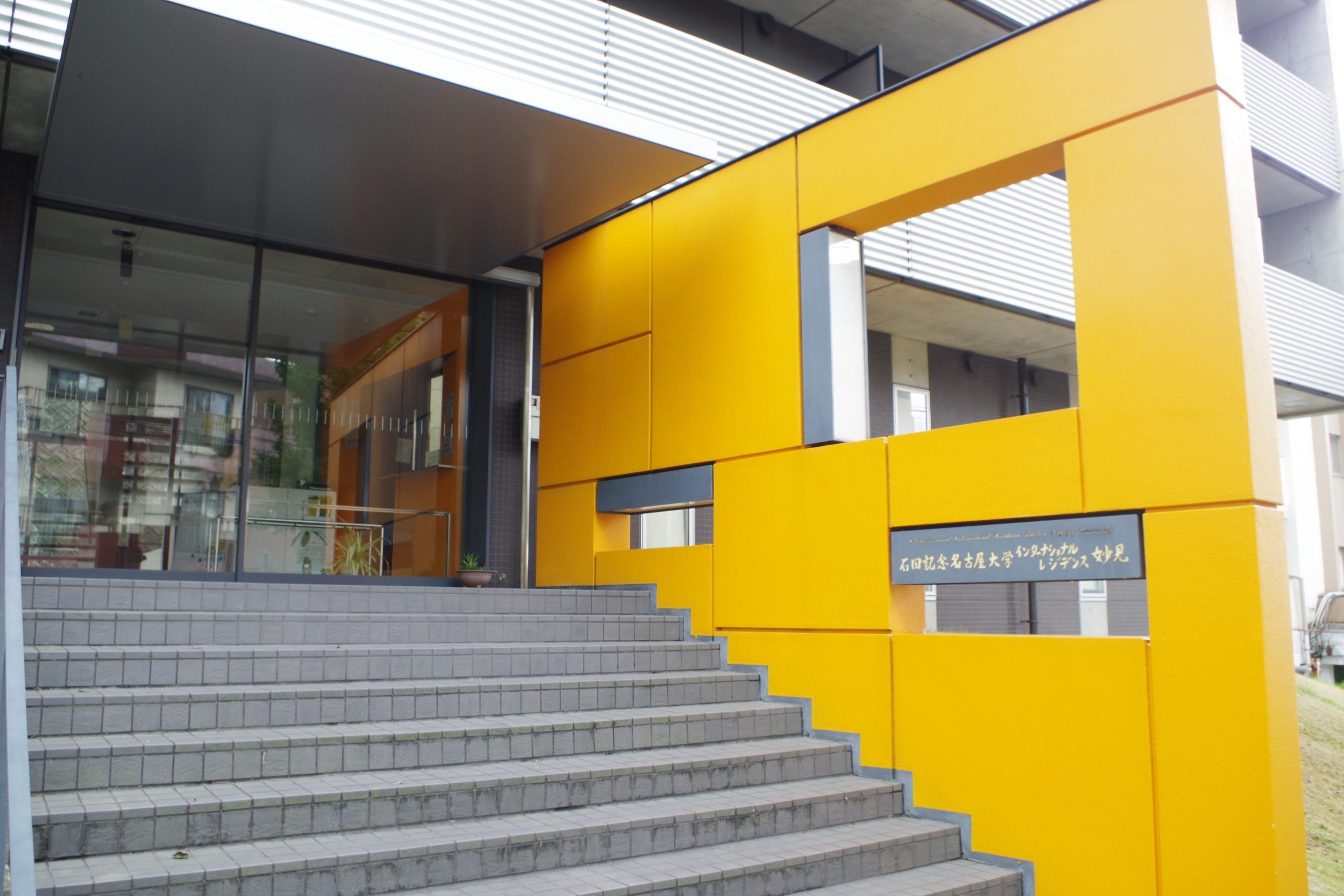
石田記念名古屋大学インターナショナルレジデンス妙見
| Address |
40, Myoken-cho, Showa-ku, Nagoya, Aichi
466-0814
Useful Information for Daily Life in Japan
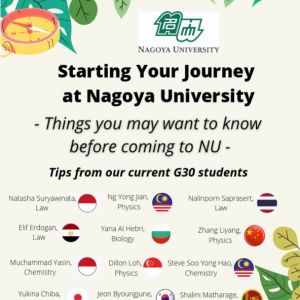
LifeHack Tips from senior students
Things you may want to know before coming to Japan. – What to bring in a suitcase, what can be bought after arrival to Japan? Let’s hear what seniors did!
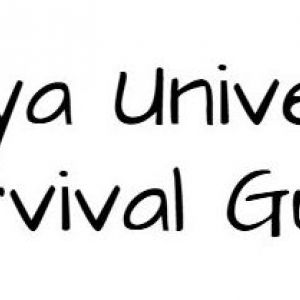
Nagoya University Survival Guide
The student-made website to provide useful information in English about life in Nagoya and at Nagoya University to international students who are currently enrolled or are thinking of enrolling to NU.
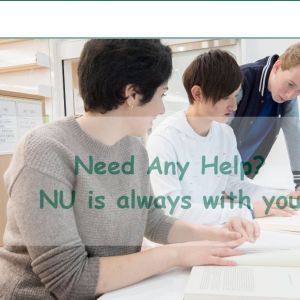
ALWAYS NU
A lot of useful information about daily life in Japan and campus life at Nagoya University. This website is made by Student Exchange Division of Nagoya University.
